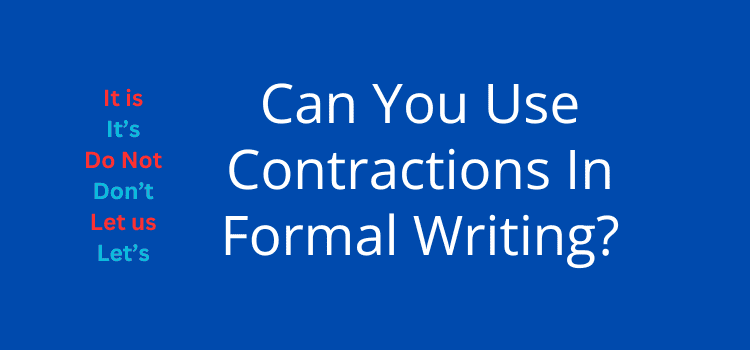
Do you think about how you use a level of formality when you write and publish articles or blog posts?
Your choice is not so much a grammatical issue as it is about your tone, style, and writing voice.
That’s why your content needs to be in a style appropriate for your topic so that readers can appreciate it.
Online communication is much more relaxed today. But you should still consider the expectations of your readers.
Six levels of formality for online content
Unlike the strict rules that apply to register in English, formality is more open to interpretation.
Here’s a quick description of possible levels you might use.
Formal: This style uses complex sentence structures and vocabulary, with limited use of contractions. It’s a style you often see in academic article writing and research reports.
Informal: It employs simple sentence structures using everyday language, with frequent use of contractions. It’s similar to how you would speak in casual conversation.
Neutral: A style that strikes a balance between formal and informal, using clear and concise language with occasional contractions and a mix of complex and simple sentence structures.
Semi-formal: With this style, you use a professional tone but add personal touches, such as anecdotes or even a little humor.
Conversational: You write as you would speak in an informal conversation. It almost always uses contractions, a touch of slang, and often a first-person perspective.
Creative: This level suits creative writing, such as poetry or short-form fiction. It often uses idiomatic or figurative language, unique sentence structures, and perhaps unconventional vocabulary choices.
When you can pinpoint these key features in your writing style, it will become much more consistent.
Once you can define the level of formality you want to use in a piece of writing, it’s much easier to stay focused.
But, of course, you want to retain your unique writing voice.
Defining a style for articles and blog posts
It’s often a fine line between a blog post and an article because they both serve the purpose of informing readers.
Generally, though, you would perhaps publish an article on a professional platform.
In this case, the suitable style may be neutral or semi-formal to project a sense of authority.
A blog post, on the other hand, is far more flexible. You usually publish on your own site or platform, so you are in control.
Your style of writing is up to you, but semi-formal, conversational, or creative writing is very common for blog posts.
An excellent way to investigate writing style formality is to note how some of your favorite writers use their voices.
You probably have a list of sites you visit regularly for news, information, or entertainment.
What attracts you to their style of writing and makes you keep returning?
The use of contractions is a key element to note because it is one of the main factors in reducing the degree of formality in any form of writing.
Also, look at the sentence length. Short sentences are also an indicator of less formal writing.
However, longer and more complex sentences are far more frequent in formal writing.
Lastly, note the vocabulary.
Does the writer use everyday words that most people would understand? Or is the vocabulary more challenging?
When you put these elements together, how would you describe the style of some of your favorite writers?
Creating your own writing voice
Take a moment to think about how you write.
What do you use the most? The first-person or second-person point of view?
Do you always contract auxiliary verbs or avoid contracting?
Is your vocabulary suitable for any reader, or is it aimed at a particular professional reading audience?
How long are your sentences and paragraphs? Short, or long and complex?
Do you include slang words and expressions from time to time? Perhaps a little humor?
When you answer questions like these, you can start to define your unique writing voice.
You don’t need to make it a strict model for every article or blog post you write.
But perhaps note four or five key elements that apply to most of your writing.
Then, you can keep them in mind to help you maintain a consistent voice and style for your readers.
Why your writing voice is important
The two major factors to consider are who you are and who your readers are.
Developing and maintaining a consistent writing voice says a lot about you.
You could say that it is your brand, but more likely, it simply reflects your personality.
As for your readers, think about what they might expect and enjoy reading.
Not every reader likes simplicity and an easy read. Some prefer more challenging texts.
It’s up to you to decide what your target readers expect or prefer.
Do you want to inform, persuade, entertain, sell a product, or build professional relationships?
Your purpose will heavily influence the level of formality you decide to use.
And what’s my style?
I would have to say that I try to maintain an informal writing voice for my articles on this site.
But with an emphasis on using the second-person point of view whenever possible or appropriate.
Summary
You certainly don’t need to adopt a strict writing style and never waver from it.
Deciding on formality is always about it being appropriate for the purpose.
If you write articles for other sites, they sometimes have a style preference, so you need to abide by their guidelines.
But if you have a site, or even a few, and regularly post new content, developing your style is beneficial.
It helps your readers get to know you, and if they like it, they are more likely to return.
The best part is that it’s not a complicated process.
All you need to do is remember to apply a handful of basics that define your style to every post or article you write.
After a little while, it becomes a habit, and you won’t even need to think about it.
So, what’s the best level of formality to use in blog posts and articles?
It’s always the one that’s you.
Related Reading: Informal Writing: The Eight Rules You May Not Know



